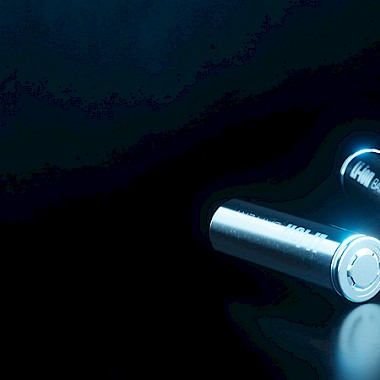Feeding solutions for plastics recycling applications
A virtuous cycle
Kubota Brabender Technologie provides special feeders for recycling synthetic fibers from plastic waste. The company is therefore helping to establish a high-tech circular economy.
The circular economy is aimed at reducing consumption of resources and regarded as a key factor in climate protection. In the last few years, Kubota Brabender Technologie has demonstrated how new processes and products can have their origins in innovative ideas. Bernhard Hüppmeier, Head of Business Development at Kubota Brabender Technologie, confirms: “In the last few years demand for feeding solutions, aimed at recycling synthetic fibers, has increased steadily.” Equipment for feeding components derived from used tires and woven fabrics as well as from familiar PET bottles is in demand. Some materials like rubber pellets are already processed to the extent that they can be fed using a normal feeder. In contrast, others require a feeding concept specially matched to their material properties.
Enhance your circular economy processes!
We help you to find the right solution. Contact Bernhard Hüppmeier, Head of Business Development
Breathing new life into used tires
Used tires can be utilized in a wide range of ways. The rubber crumb obtained from recycling used tires can be processed in extruders, kneaders or mixers along with additives and crosslinkers to manufacture new products like insulation materials, road surfacing or floor coverings, rubber mats or new tires. That is why it is important not simply to dispose of but recycle used tires, because they are made of India rubber, bulking agents like carbon black, silica and carbon, plasticizers and reinforcement materials like steel and nylon as well as other chemicals like sulfur, for example.
The used tire recycling process
Used tires are reduced to palm-sized pieces in shredders and then ground down to small pellets in pellet plants. All residual metal is then removed, leaving pure rubber crumb for reuse. But used tires also contain woven fibers like polyester and polyamide fibers, which can be vacuumed off during the shredding or grinding phases. In extrusion processes these fibers then serve as reinforcement or bulking agents for new polymer blends and can be processed into fiber-reinforced polymer compounds by mixing in additives.
PE/aluminum recycling of used beverage cartons
Beverage cartons also consist of valuable raw materials: a combination of cardboard, plastic and often aluminum. However, the cellulose fibers reclaimed during recycling have a significantly longer fiber length and better strength properties than most other types of waste paper. They are therefore particularly suitable for producing sturdy corrugated cardboard packaging. In the so-called Palurec method, the remaining PE/aluminum foil remnants and closures are separated using a zigzag sifter. This is necessary, because they feature very uneven ‘particle’ sizes, have poor pourability properties and tend towards severe bridging. A special feeding solution provided by Kubota Brabender Technologie is therefore used when LDPE (low density polyethylene) is being processed – the FiberXpert. This fiber feeder is particularly good at handling fibers of different lengths, which snag easily. For pelletizing purposes, the FiberXpert feeds the reclaimed LDPE into a twin-screw extruder. This enables it to be reused for various applications.
Our special fiber feeder, the FiberXpert, is particularly good at handling fibers of different lengths, which snag easily and which result when beverage cartons are recycled.Bernhard Hüppmeier, Head of Business Development, Kubota Brabender Technologie
Recycling of carpets made of PA fibers
In the European Union, an estimated 1.6 million metric tons of carpet are disposed of annually. According to a very recent study by market research institute Goldstein Market Intelligence, around 95 percent of this quantity ends up at disposal sites or incinerator plants. A sensible alternative to incineration is recycling waste carpets made of high-grade synthetic fibers like polyamide (PA) or polypropylene (PP). There are two solutions for waste carpets or carpet remnants made of PA, which consist of the texturized carpet continuous filament yarn BCF (bulk continuous filament). They can be chemically recycled into polyamide or mechanically processed into secondary plastics. To this end, PA carpets are sorted according to their fiber components PA6 or PA 6.6 and then shredded. After separation, they are fed via silos into a depolymerization process.
Optimum solution for fiber processing
The FiberXpert FX225 loss-in-weight feeder, which can handle long, uneven fibers, is particularly suited to this task. “Synchronous conical twin screws in combination with a large feed section, which can be fitted with a stuffing unit, and a high feed rate of 1000 kilograms per hour ensure that pelletized Polyamide 6 features excellent melting properties and superior quality,” Bernhard Hüppmeier explains. The FX225 is also ideally suited to feeding PA, PET as well as PE fibers obtained from woven textiles. This process, for example, involves recycling textile fiber borders from the weaving process and silicon-coated or non-silicon coated textile fabrics.
PET is transformed into rPET
Versatile and sustainable use of plastic can be made in various applications. However, to utilize plastic for as long as possible and introduce this material into the cycle, plastic waste needs to be utilized even more efficiently in the form of valuable secondary raw materials. Kubota Brabender Technologie already provides the appropriate feeding technology to process ground PET flakes into recycled rPET. In the subsequent extrusion process, the PET flakes are treated with additives and the molten mass is sent on to the liquid state polycondensation phase. After the molten mass has been cooled, pelletized or foamed up using physical expanding agents, it reaches the downstream film extrusion stage, which produces fully recyclable rPET foam film.
Bulk material solutions for plastics
Why not read the brochure about our bulk material solutions for plastics:

